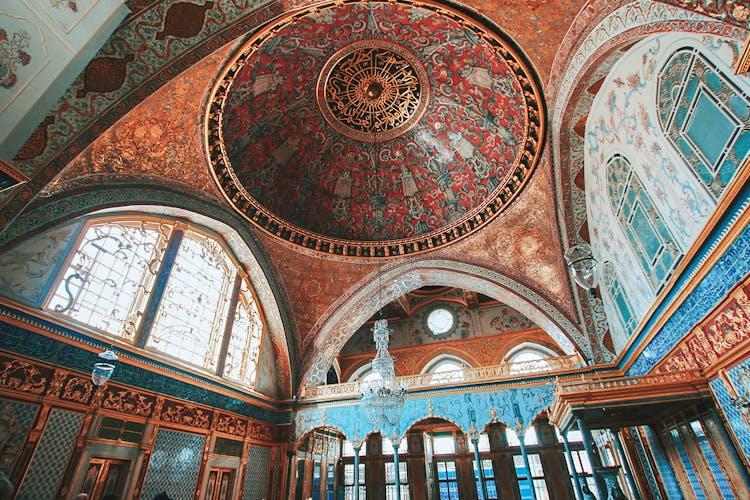Topkapi Palace is a magnificent Ottoman imperial palace that stands as a testament to Istanbul’s rich history and culture. As one of the city's most iconic landmarks, Topkapi Palace is a must-visit destination for anyone seeking to immerse themselves in the opulence and grandeur of the Ottoman Empire. But did you know about the fascinating and mysterious realm within the palace walls? In a secluded area of the palace lies the Topkapi Palace Harem that housed the sultan's family, concubines, and servants. Let’s delve into the intriguing world of the harem, and explore its history, architecture, and the daily lives of those who called it home.
What is the Topkapi Palace Harem?
The Topkapi Palace Harem was a secluded area within the palace, reserved for the private life of the Ottoman dynasty rulers. In Muslim families, the term "harem" refers to domestic spaces exclusively designated for women. The complex boasted 400 exquisitely tiled rooms linked by courtyards and fountain-adorned gardens.
The Harem consisted of a series of interconnected buildings and structures, with each service team and hierarchical group having its own designated living space clustered around a courtyard. The Harem was a complex structure, with the apartments of the concubines, women, the queen mother, the ruler, and princes encircled by the houses of castrated monks. Concubines accepted into the palace were educated in Islamic traditions and customs, reading and writing, and various skills such as music, sketching, sewing, and embroidery, depending on their aptitude and ability. Some concubines rose through the ranks, from servants to becoming the sultan's chosen partners, all thanks to their intelligence, morality, and beauty. Some even married men from the administrator class or attained the prestigious position of “Mother Sultan”.
Although controversial by today's standards, the harem played a vital role in the Ottoman empire's political and social structure. The women of the harem, particularly the Valide Sultan, or Queen Mother, and the sultan's favorites wielded significant influence over the empire's affairs. They were involved in political decision-making, patronage, and even international diplomacy.
Recommended tickets to Topkapi Palace
History and architecture of the harem

The Harem's interior houses a breathtaking display of Ottoman architecture and craftsmanship. Its walls are adorned with intricate tiles in vibrant colors, creating a mesmerizing atmosphere. The secret courtyards provide a tranquil escape, with lush gardens and bubbling fountains. Despite the devastating earthquake that struck the palace, much of the harem's beauty has been preserved. Interestingly, the Harem shares a connection with the nearby Hagia Sophia, as some of the tiles used in the Harem's decoration were sourced from the ancient cathedral.
The Hamam, or Turkish bath, is another highlight of the Harem, offering a glimpse into the daily rituals of the palace's inhabitants. The Harem even had its own hospital and a school for the sultan's children, particularly the princes who were potential heirs to the throne.
The intricate details, such as the hand-painted tiles, stained glass windows, and ornate woodwork, showcase the skill and artistry of the craftsmen who built and decorated the palace. The layout of the Harem, with its interconnected rooms and courtyards, reflects the complex social hierarchy and the need for privacy and seclusion. The Harem's design also incorporates elements of both Turkish and Islamic architecture, such as the use of domes, arches, and intricate geometric patterns.
Is it worth visiting the Topkapi Palace Harem?
Absolutely! Visiting the Topkapi Palace Harem is an experience you won't want to miss. Despite the longer queues and the palace's vast size, the Harem offers a captivating journey through the heart of Ottoman history. As you explore the numerous rooms within the complex, you'll discover a treasure trove of artifacts and relics that bring the past to life. From the exquisite tile designs to the impressive displays of armor and weaponry, every corner of the Harem tells a story. The Imperial Hall is a particular highlight, transporting you back in time to imagine the grandeur of special occasions like the Ottoman sultans' coronations. The Harem's beauty and historical significance will leave you in awe, making you spend hours absorbing every detail!
Highlights of the Topkapi Palace Harem
1Hall of the Ablution Fountain
The Hall of the Ablution Fountain is a stunning example of Ottoman architecture, featuring a magnificent marble fountain used for ritual cleansing before prayer. The hall's intricate tile work and calligraphic inscriptions create a serene atmosphere.
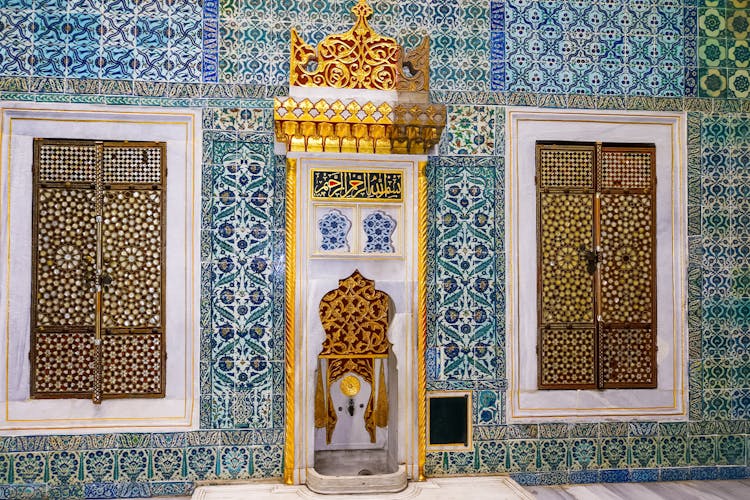
2Apartments of the Queen Mother
The Queen Mother, or Valide Sultan, held a position of great influence within the Harem. Her apartments reflect her status, with lavishly decorated rooms and a private courtyard.
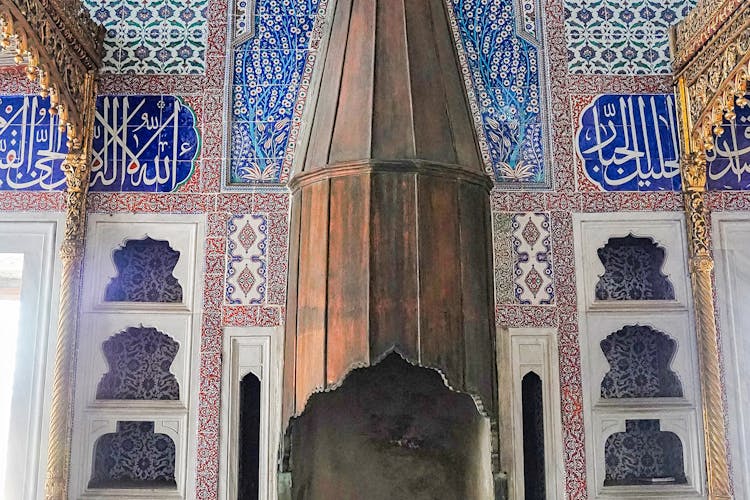
3Courtyard of the Favorites
This courtyard was reserved for the sultan's favorite concubines, who enjoyed a higher status within the Harem hierarchy. The area features beautiful gardens, fountains, and intricately decorated rooms.
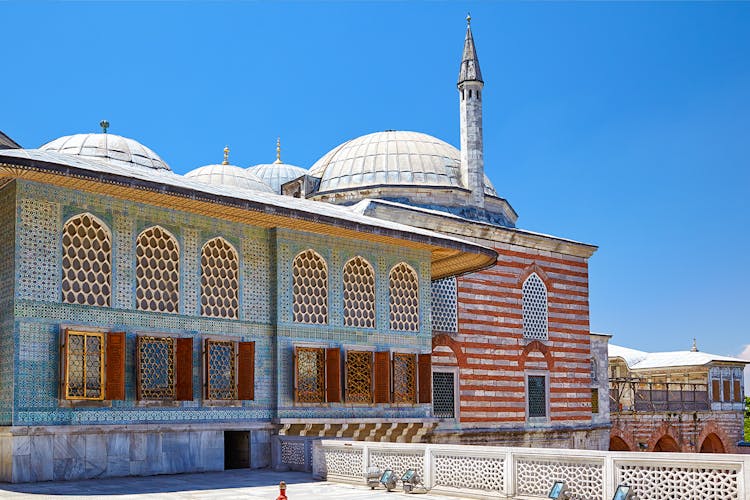
4Imperial Hall
The Imperial Hall served as the setting for important ceremonies and celebrations, such as the sultan's coronation. The hall's grandeur is evident in its ornate decorations, including gold-plated ceilings and exquisite tilework.
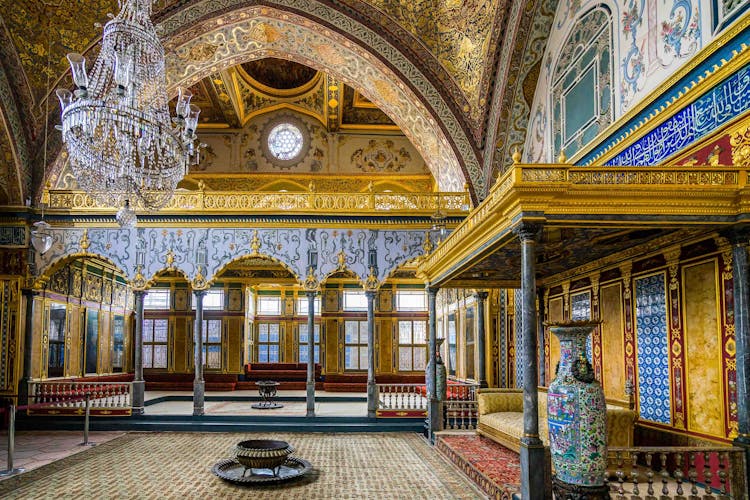
5Aviary and Harem Gate
The Aviary, located near the Harem Gate, was a peaceful retreat for the palace's inhabitants. The gate itself is an impressive structure, showcasing the skill of Ottoman craftsmen. As you explore the Harem, you'll also come across the Courtyard of the Black Eunuchs, who served as the guardians and servants of the Harem.
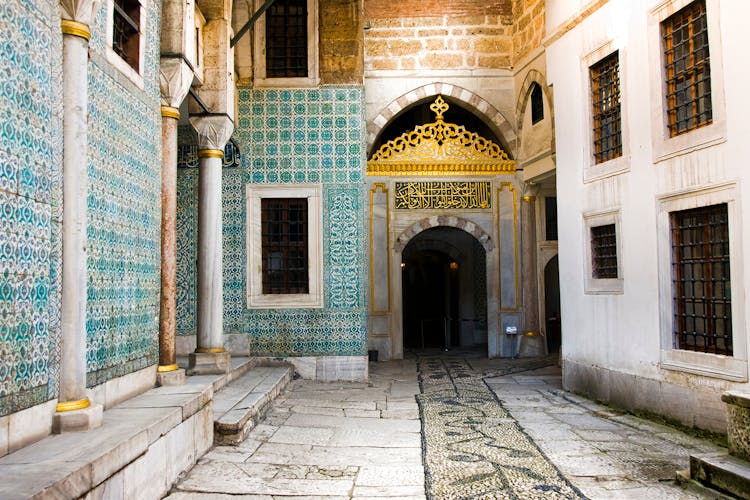
6Domed Cupboard Chamber
The Domed Cupboard Chamber is another remarkable feature of the Harem. This room was used to store valuable items, such as jewelry and precious fabrics. The chamber's ceiling is adorned with an intricate dome, decorated with stunning tilework and calligraphic inscriptions. The cupboards too are masterpieces of woodwork, featuring inlaid designs and delicate carvings.
